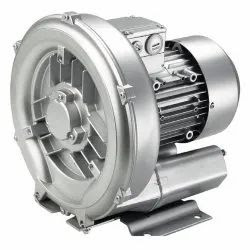Blower Options and Accessories
When selecting and using blowers, considering the available options and accessories can significantly enhance their performance, functionality, and suitability for various applications. Here’s a comprehensive overview of blower options and accessories:
**1. Blower Options
**a. Types of Blowers
- Roots Blowers: Positive displacement blowers with two or three lobes for high-pressure, high-flow applications.
- Centrifugal Blowers: Use impellers to move air or gases, suitable for large volumes of air with moderate pressures.
- Regenerative Blowers: Use a rotating impeller to create high air pressure, ideal for low to medium-flow applications.
- Inline Blowers: Designed to be mounted in-line with ducting, suitable for compact spaces and direct airflow applications.
- Axial Flow Blowers: Move air along the axis of the impeller, useful for high-flow, low-pressure applications.
**b. Power Sources
- Electric Motors: Commonly used for consistent and reliable power.
- Gas Engines: Suitable for mobile or remote applications where electricity is not available.
- Hydraulic Motors: Used in environments where hydraulic power is preferred.
**c. Pressure and Flow Rate
- High Pressure: For applications requiring significant pressure, such as pneumatic conveying and industrial processes.
- Medium Pressure: For general industrial and ventilation applications.
- Low Pressure: For applications needing large volumes of air at low pressure.
**d. Material and Construction
- Cast Iron: Durable and robust, suitable for many industrial applications.
- Stainless Steel: Resistant to corrosion, ideal for harsh or corrosive environments.
- Aluminum: Lightweight and often used for less demanding applications.
**e. Cooling Methods
- Air-Cooled: Common for standard applications; relies on ambient air to dissipate heat.
- Water-Cooled: Used for high-temperature environments to ensure efficient cooling and prevent overheating.
**2. Accessories
**a. Silencers and Mufflers
- Purpose: Reduce noise levels produced by the blower.
- Use: Enhances the working environment and complies with noise regulations.
**b. Filters
- Purpose: Remove contaminants from the intake air to protect the blower and improve performance.
- Types: Air filters, dust filters, and oil filters.
**c. Pressure Regulators
- Purpose: Control and maintain the desired pressure level within the system.
- Use: Ensures consistent operation and prevents overpressurization.
**d. Check Valves
- Purpose: Prevent backflow of air or gases into the blower.
- Use: Protects the blower from potential damage and ensures smooth operation.
**e. Vibration Isolators
- Purpose: Reduce vibrations transmitted from the blower to the mounting structure.
- Use: Minimizes noise and prolongs the life of both the blower and the installation.
**f. Flow Meters
- Purpose: Measure the volume of air or gas being moved by the blower.
- Use: Provides real-time data for monitoring and optimizing system performance.
**g. Temperature Sensors
- Purpose: Monitor the temperature of the blower and the air or gas being handled.
- Use: Prevents overheating and ensures safe operation.
**h. Lubrication Systems
- Purpose: Automatically provide lubrication to moving parts.
- Use: Reduces wear and tear, and maintenance requirements.
**i. Control Panels
- Purpose: Manage blower operation, including start/stop, speed control, and pressure settings.
- Use: Enhances user control and integrates with automation systems.
**j. Ducting and Hoses
- Purpose: Direct the airflow from the blower to the desired location.
- Use: Ensures efficient and targeted airflow distribution.
**k. Temperature and Pressure Relief Valves
- Purpose: Protect the blower and system from excessive pressure or temperature.
- Use: Ensures safe operation by preventing overpressure and overheating.
**3. Choosing the Right Options and Accessories
**a. Application Requirements
- Considerations: Match options and accessories to the specific needs of your application, such as pressure requirements, airflow volume, and environmental conditions.
**b. System Integration
- Considerations: Ensure that accessories are compatible with the blower and overall system design.
**c. Maintenance and Service
- Considerations: Select accessories that facilitate easy maintenance and service to minimize downtime.
**d. Regulations and Standards
- Considerations: Ensure that all components meet industry regulations and standards for safety and performance.
**4. Conclusion
Selecting the right blower options and accessories can significantly impact the efficiency, performance, and longevity of your blower system. By understanding the available options and how they fit into your application, you can optimize your system for the best results. If you need further guidance on specific models or accessories, feel free to ask!
Wide range of roots blower models and configurations are avaliable for different applications , process parameters and environment conditions
